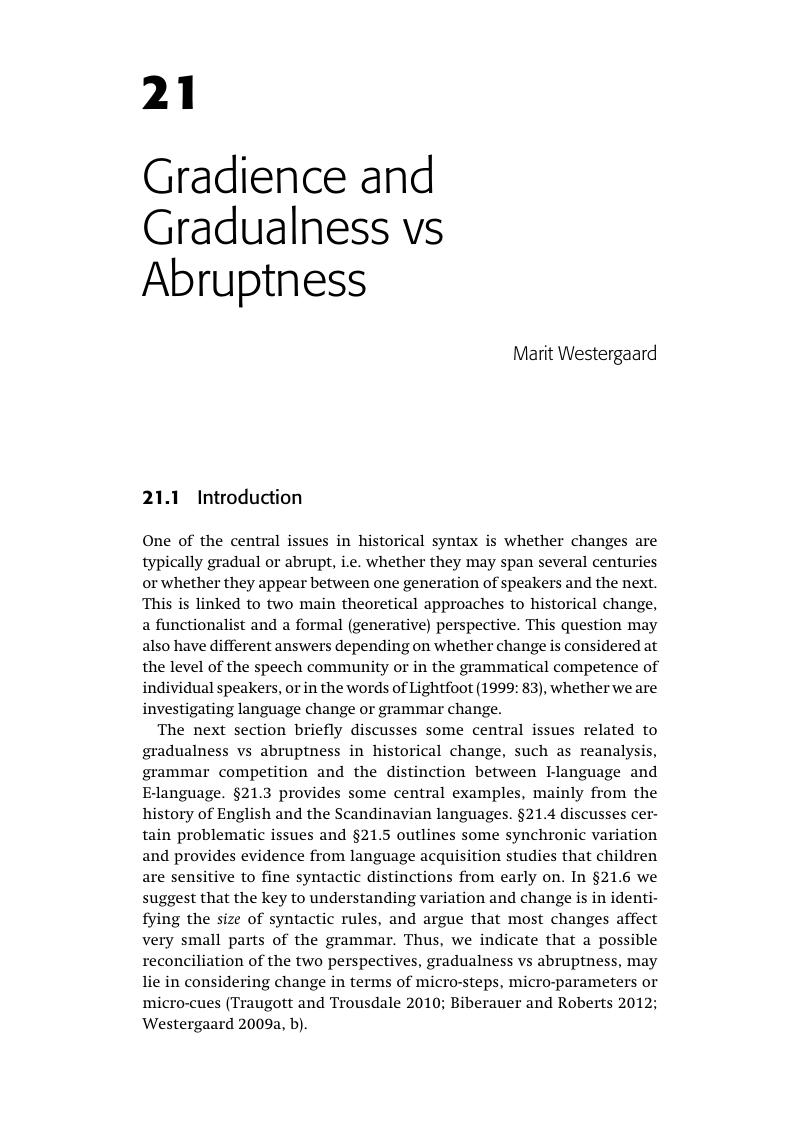Book contents
- The Cambridge Handbook of Historical Syntax
- Cambridge Handbooks in Language and Linguistics
- The Cambridge Handbook of Historical Syntax
- Copyright page
- Contents
- Figures
- Tables
- Contributors
- Abbreviations
- Introduction
- Part I Types and Mechanisms of Syntactic Change
- Part II Methods and Tools
- Part III Principles and Constraints
- Part IV Major Issues and Themes
- 19 The Actuation Problem
- 20 Inertia
- 21 Gradience and Gradualness vs Abruptness
- 22 Cyclicity
- Part V Explanations
- Part VI Models and Approaches
- Index
- References
21 - Gradience and Gradualness vs Abruptness
from Part IV - Major Issues and Themes
Published online by Cambridge University Press: 28 April 2017
- The Cambridge Handbook of Historical Syntax
- Cambridge Handbooks in Language and Linguistics
- The Cambridge Handbook of Historical Syntax
- Copyright page
- Contents
- Figures
- Tables
- Contributors
- Abbreviations
- Introduction
- Part I Types and Mechanisms of Syntactic Change
- Part II Methods and Tools
- Part III Principles and Constraints
- Part IV Major Issues and Themes
- 19 The Actuation Problem
- 20 Inertia
- 21 Gradience and Gradualness vs Abruptness
- 22 Cyclicity
- Part V Explanations
- Part VI Models and Approaches
- Index
- References
Summary

- Type
- Chapter
- Information
- The Cambridge Handbook of Historical Syntax , pp. 446 - 466Publisher: Cambridge University PressPrint publication year: 2017
References
- 2
- Cited by



